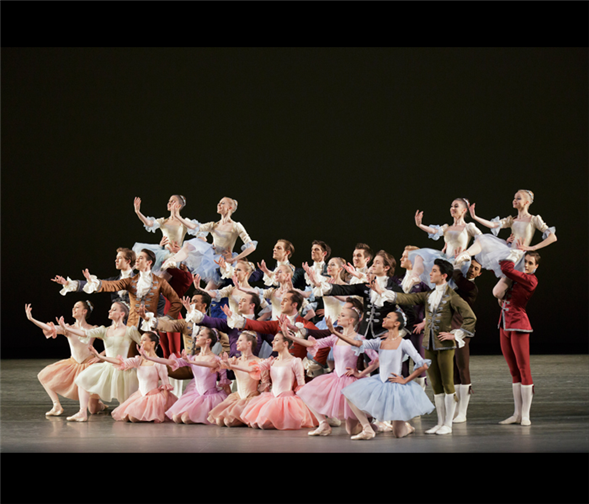Why I keep attending The Goldberg Variations at New York City Ballet
---
According to the programs I've kept (because, of course, I save them all), I've seen Jerome Robbins'
The Goldberg Variations more than a dozen times since 1980. Why do I always make sure to catch the Tony Award-winning choreographer's expansive 1971 ballet every time it's revived by New York City Ballet, as it is
this month? Because it's unlike anything else Robbins created: 85 uninterrupted minutes of elegantly structured, often surprising classical dancing with no hint of character or story, set to
Johann Sebastian Bach's keyboard masterwork of the same name.
I know it sounds daunting. But I find this ambitious ballet reels me in and invites me to experience the dancing with sharper eyes and more musical awareness. There's something about its unhurried pace and settling in for the long haul that heightens my powers of observation.
Robbins created
Goldberg during the second half of his prolific NYCB tenure. In the first part of his career, he worked both in ballet and on Broadway -- he choreographed the original productions of
On the Town and
The King and I -- and from the mid-'50s through the '60s, his Main Stem successes included
West Side Story,
Fiddler on the Roof, and
Gypsy. When he returned to NYCB in 1969, it was big news, and he continued to focus almost exclusively on ballet for the next few decades.
Robbins seemed to relish the challenge of creating something as pristine as
Goldberg. But it wasn't easy. It was his first time tackling Bach and, according to
Deborah Jowitt's Robbins biography, he went through a bout of hepatitis and suffered a torn Achilles tendon during the extended creative process. Plus, he was "full of doubts… and worked on [
Goldberg] for what seemed to the dancers an eternity." Yet through trial and error, he discovered a pathway through the dense, contrapuntal music.
Sections flow into one another with remarkable grace, offering gentle but distinctive contrasts, and allowing subtle connections to emerge.
The ballet's first half explores youthful energy and carefree playfulness. The featured dancers -- four men and two women --- are frequently frisky, but can also be contemplative. The second half is worldlier; the relationships of the three older couples are more set and secure.
Over the years, I've watched dancers transition from the younger roles to the more mature ones, and the reverberations of past performers add new layers to each mounting. Ten years ago, I saw Ashley Bouder bound around with fearless glee as the more robust of the two women in Part I, while Joaquin De Luz portrayed the most playful and daring of the men's roles. Now both have "graduated" to Part II, in which they dance together as a classically virtuosic couple. In their early years with the company, future NYCB stars Wendy Whelan and Peter Boal were among those romping through Part I with eager verve; they soon evolved into memorable interpreters of Part II roles. Whelan's angular flexibility was ideal for an offbeat duet of pretzeling connections, while Boal brought his innate elegance to the bravura role Robbins originally created for Helgi Tómasson.
But regardless of who's dancing, what captivates me most about
Goldberg each time I see it is the sophistication of Robbins' theatrical vision, which is as clear in this abstract ballet as it is in his story-driven works. I get a visceral thrill from his brilliant craftsmanship, and how effectively he designed both the broad canvas and the individual sections. The penultimate sequence in Part I, in which Robbins offers a fast-paced recap of everything that comes before, is exhilarating. But it's just a teaser for the climax in Part II, set to the last 30 variations, a
quodlibet in which Bach incorporated two popular folk melodies of the era. The entire cast comes together and fills the stage with densely patterned activity that finishes with a flourish only a theatre legend could devise. As the original theme replays, Robbins brings the ballet full circle and returns to its calm opening, with two dancers on the stage and a world of possibilities ahead. It's a bit reminiscent of the end of
On the Town, when the three sailors kiss their loves goodbye and a new trio of seamen takes their place, ready to take New York City by storm.
Even though I just saw NYCB do
Goldberg in February, I'm eager to see it again this month. I can't imagine ever tiring of it. For all the times I've experienced it, I always discover something fresh and unexpected.
This month, NYCB will present The Goldberg Variations on May 20, 26, and 29.
---
Susan Reiter frequently writes about dance for TDF Stages
Photo by Paul Kolnik
